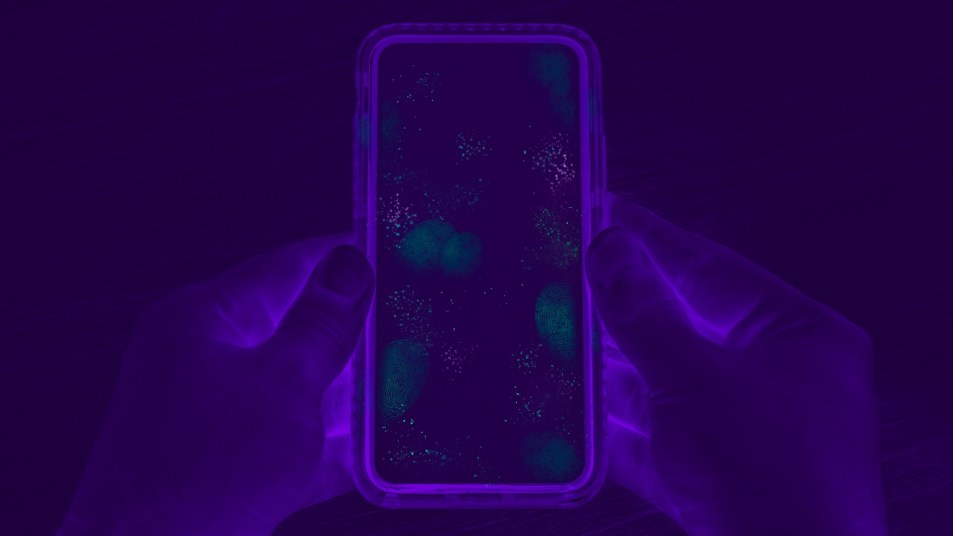Bad Allergies? Study Shows Your Phone May Be the Culprit
It's 10 times dirtier than the average toilet seat.

As you may know, your phone is one of the dirtiest objects you touch daily. You bring it wherever you go, and while you wash your hands repeatedly throughout the day, your phone doesn’t get the same treatment. As a result, touch screens harbor a wide array of microorganisms. Indeed, scientists at the University of Arizona found that the average cellphone is 10 times dirtier than the average toilet seat.
Yet most microorganisms on your phone won’t affect you, right? Human skin is covered in harmless microbes and bacteria, so most of the organisms living on your screen won’t make you sick. While this is true, phones pick up pathogens every so often (including streptococcus, E. coli, and Klebsiella pneumoniae, a bacteria that causes pneumonia and even meningitis). And, according to a new study presented at the American College of Allergy, Asthma, and Immunology (ACAAI) scientific meeting, smartphones frequently pick up allergens.
The Allergens Lurking on Smartphones
For the ACAAI study, researchers wanted to learn more about the potential allergens mingling on our smartphones. They created phone models, which mimicked the size, shape, and surface of real smartphones. Then, 15 volunteers each carried around a phone model for a week, and used electrostatic wipes to take samples from the “phone” surface every day. (Electrostatic wipes are wipes that are negatively charged, which makes them ideal for picking up particles and microorganisms.) Finally, the researchers collected and tested the wipes to see what they captured.
Here’s what the researchers found: All the “smartphones” harbored various levels of beta-D-glucans and endotoxins. Beta-D-glucans, or BDNs, are remnants of mold that can cause an immune system response, like itching or coughing. Endotoxins are toxic chemicals released from dying bacteria, and they can also produce an immune reaction. Cat and dog allergens (like dander) were also found on the “phones” of participants who owned pets.
So, are the allergens on our phones enough to cause an itchy, runny nose? Payel Gupta, MD, says yes. “If you touch your phone and then you touch your eyes, nose, or mouth, then the allergens can enter your nasal or respiratory tract or eye mucosa,” he explains.
What You Can Do
Now that we know our smartphones carry allergens — in addition to potentially dangerous pathogens — what can we do to clean them? Cleaning an electronic is not easy, as moisture may damage the device.
The researchers who conducted the ACAAI study found that a mixture of chlorhexidine (a skin-safe disinfectant) and cetylpyridinium (an oral antiseptic) was the most effective at reducing BDNs and endotoxins. A mixture of benzyl benzoate (an active substance used to treat various infections) and tannic acid (a weak acid with antibacterial and antiviral properties) was the most effective at reducing pet allergens. However, these disinfectants aren’t readily available on the market.
Instead, we recommend a combination of isopropyl alcohol, dish soap, and a toothpick for small spaces, like your phone’s charging port. How to:
- Unplug and turn off your phone.
- Take your phone case off. Wash it separately with warm, soapy water.
- Wipe down your phone with an isopropyl alcohol wipe, or a soft cloth or paper towel that has been saturated with isopropyl alcohol. (Make sure the cloth or towel is not overly saturated.)
- Use a wooden toothpick to gently pick debris and dust out of your phone’s charging port.
To make sure you’re cleaning your phone regularly, set up phone alerts. Aim to do a quick wipe-down at least once every three days, and a full cleaning once every week. And if you take your phone into the bathroom (as many of us secretly do!), we strongly recommend cleaning it once a day. “Call” us worry warts, but you can never be too careful.
















